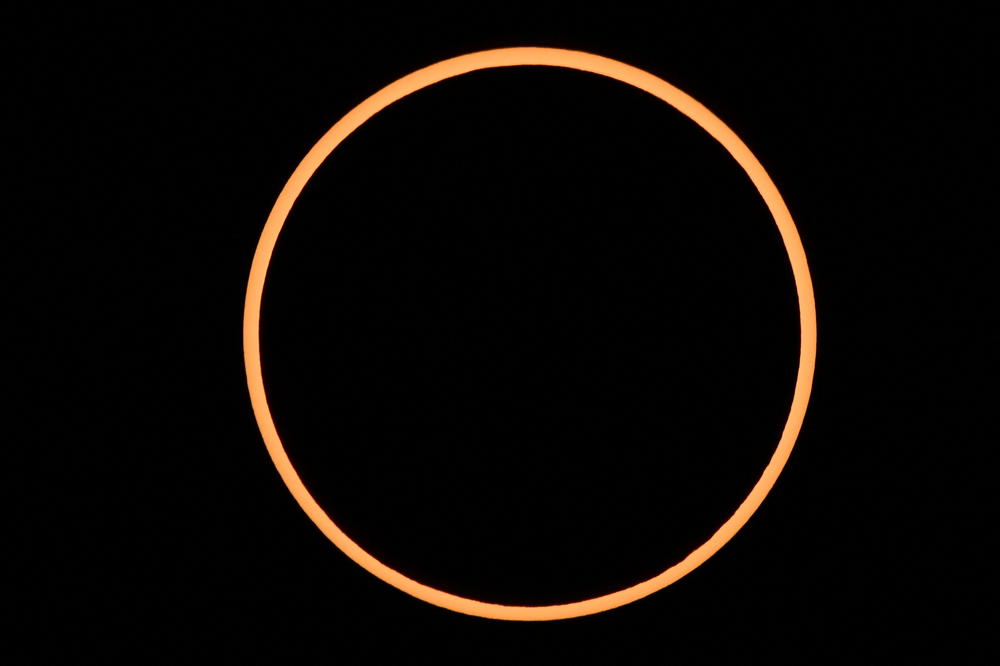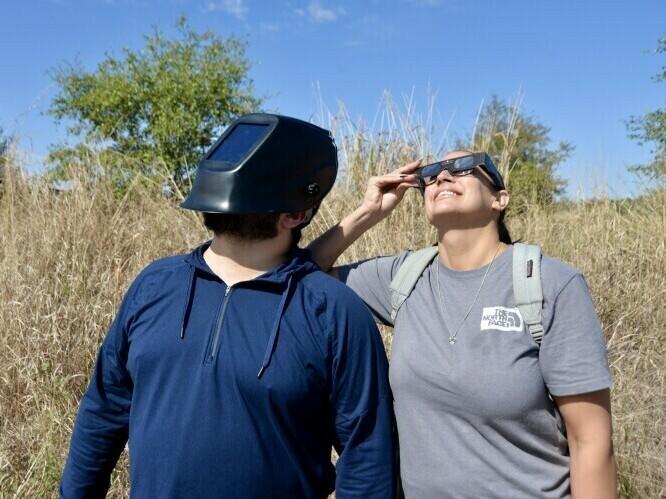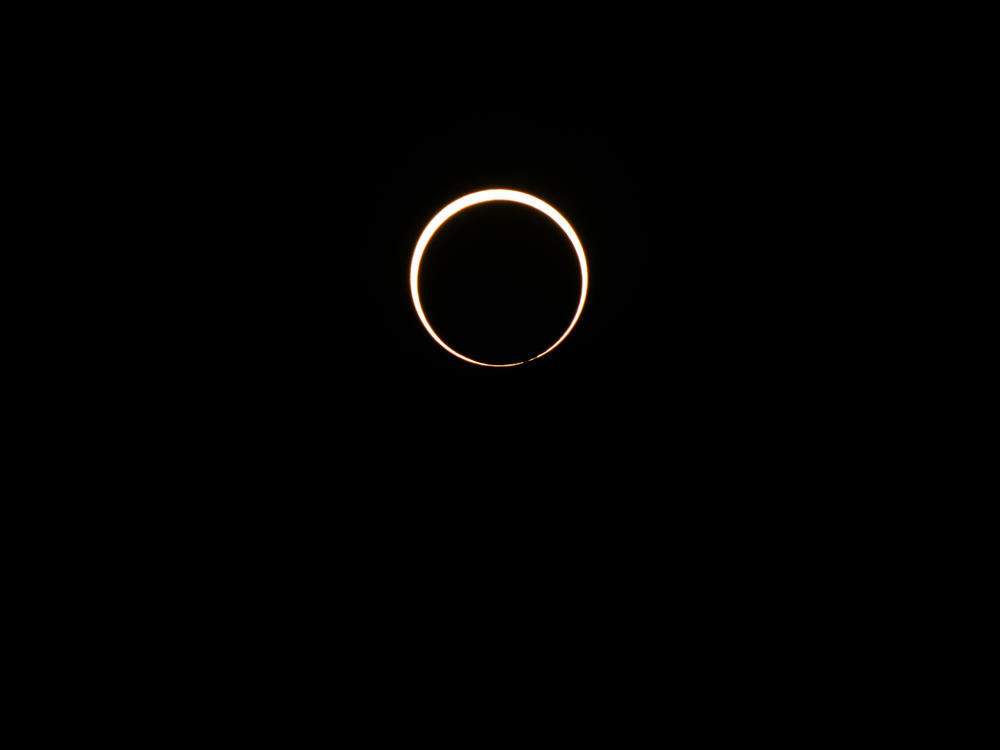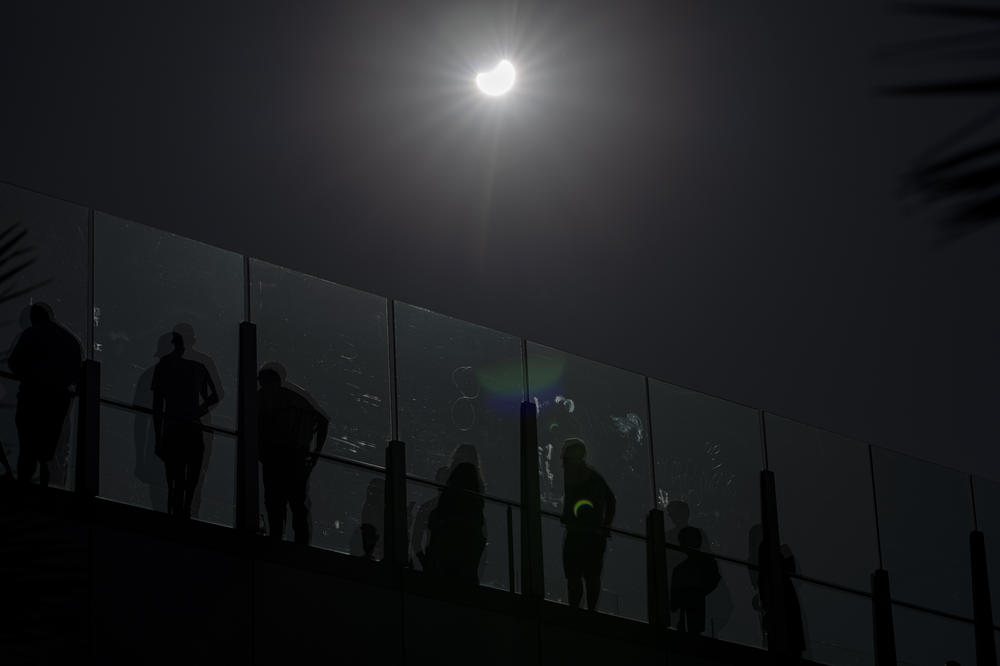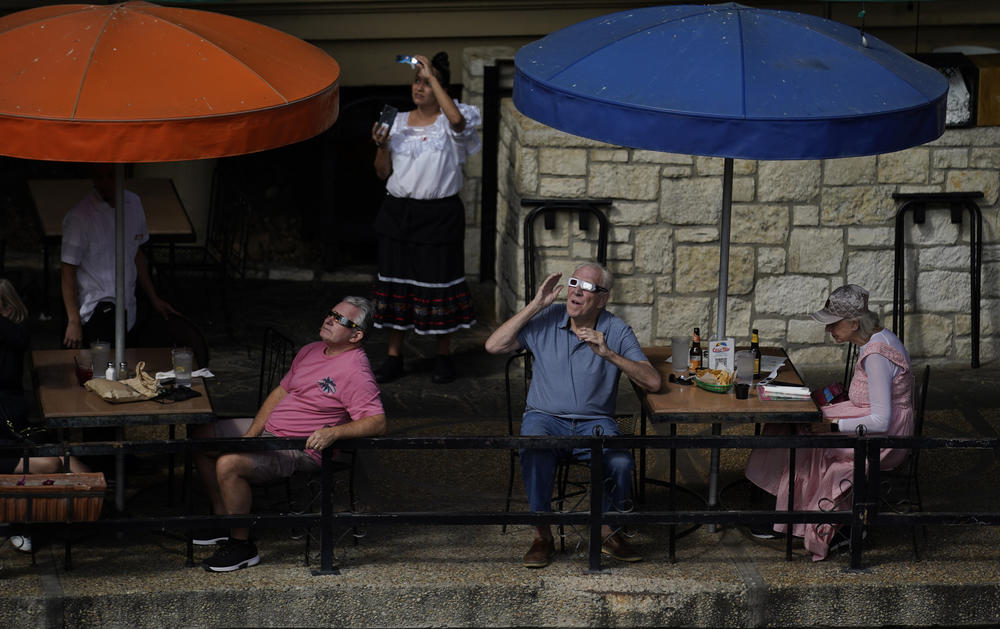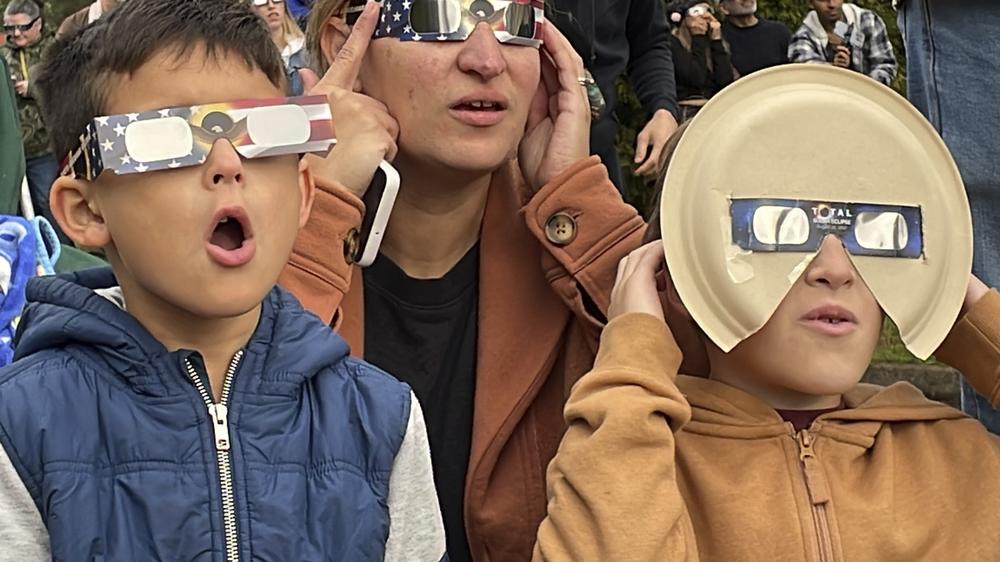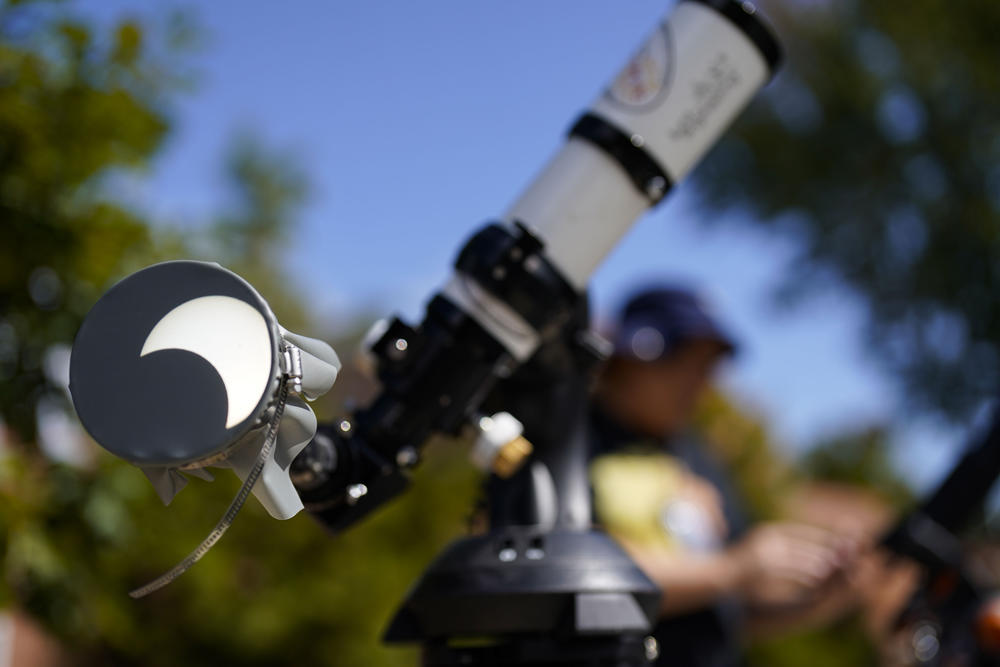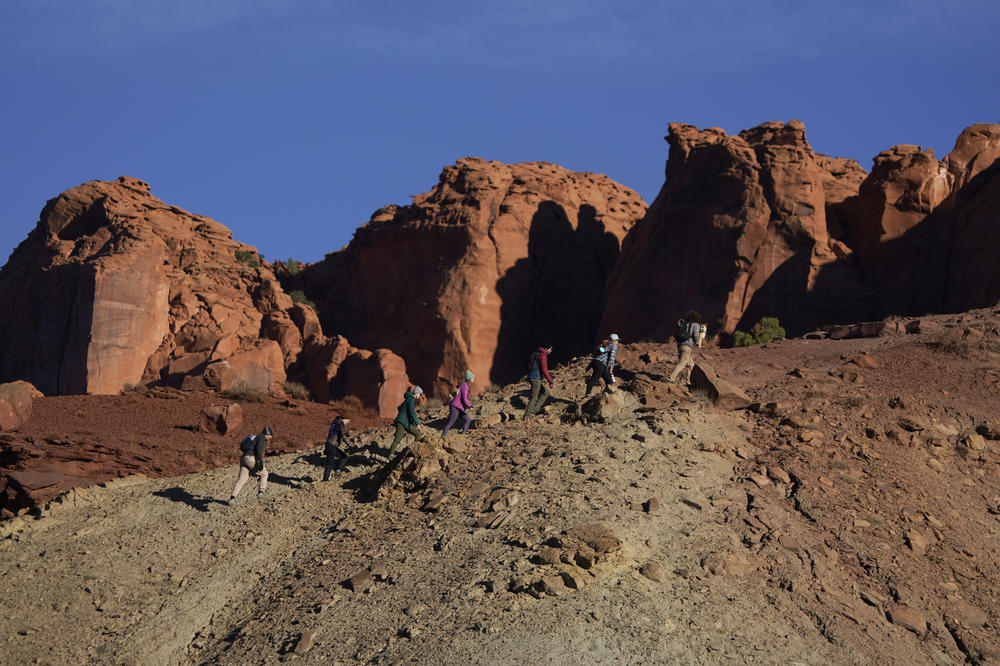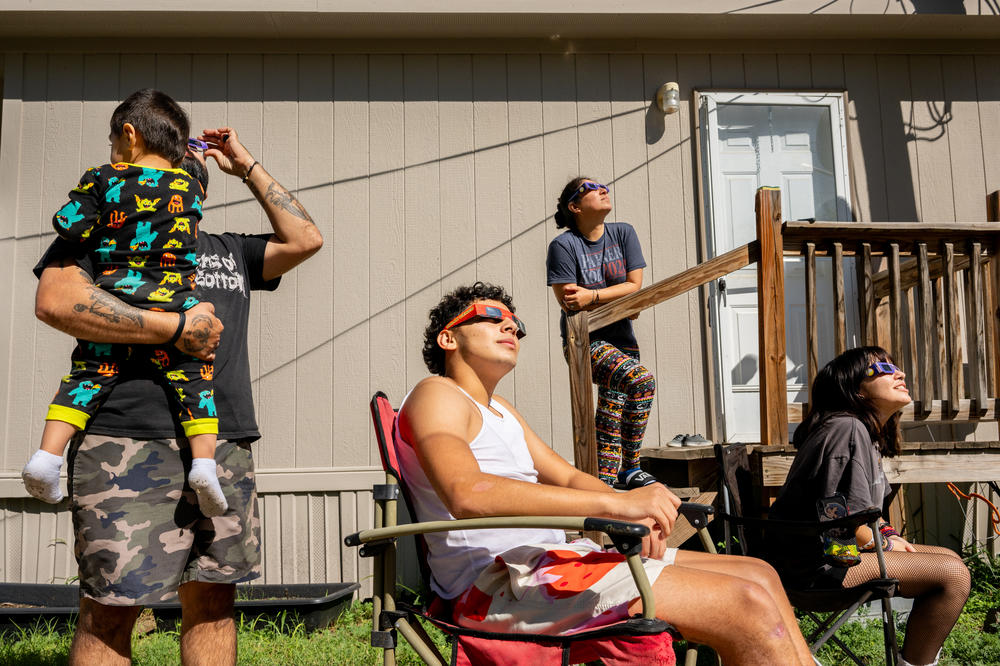Section Branding
Header Content
Scenes from the rare 'ring of fire' eclipse
Primary Content
Updated October 14, 2023 at 8:53 PM ET
Crowds of spectators gawped and cheered as they witnessed the "ring of fire" eclipse pass over parts of the U.S. on Saturday.
The rare spectacle bathed millions of Americans in a lunar shadow as the moon moved between the Earth and the sun.
The annular solar eclipse, as the phenomenon is known, projected a halo of sunlight across skies in Oregon, California, Nevada, Utah, Arizona, Colorado, New Mexico and Texas, though cloudy skies in Oregon obscured the view for some. Other areas caught a partial eclipse.
Jonathan Quirarte watched the event from Phil Hardberger Park in San Antonio, reported Texas Public Radio's Jia Chen. He wore a welder's mask to protect his eyes from eclipse-gazing.
"It's kind of a spiritual thing," he said. "I'm not a very spiritual person but these kinds of things really move me. I find it really beautiful."
In southern Utah, eclipse seekers hit the trail in Bryce Canyon National Park before sunrise to stake out their viewing spot. John Edwards, a cancer drug developer, made a cross-country solo trip to catch the eclipse from the park, reported The Associated Press.
"I just think it's one of those things that unites us all," Edwards told the news outlet. "I just think it's seeing these unique experiences that come rarely is what got me here. This is about as rare as it gets."
The next "ring of fire" event won't happen in the U.S. until 2039, NASA says.
But don't toss your solar-filtered "eclipse glasses" just yet — a total solar eclipse will occur on April 8, 2024, when the moon will completely block the sun.
Copyright 2023 NPR. To see more, visit https://www.npr.org.
